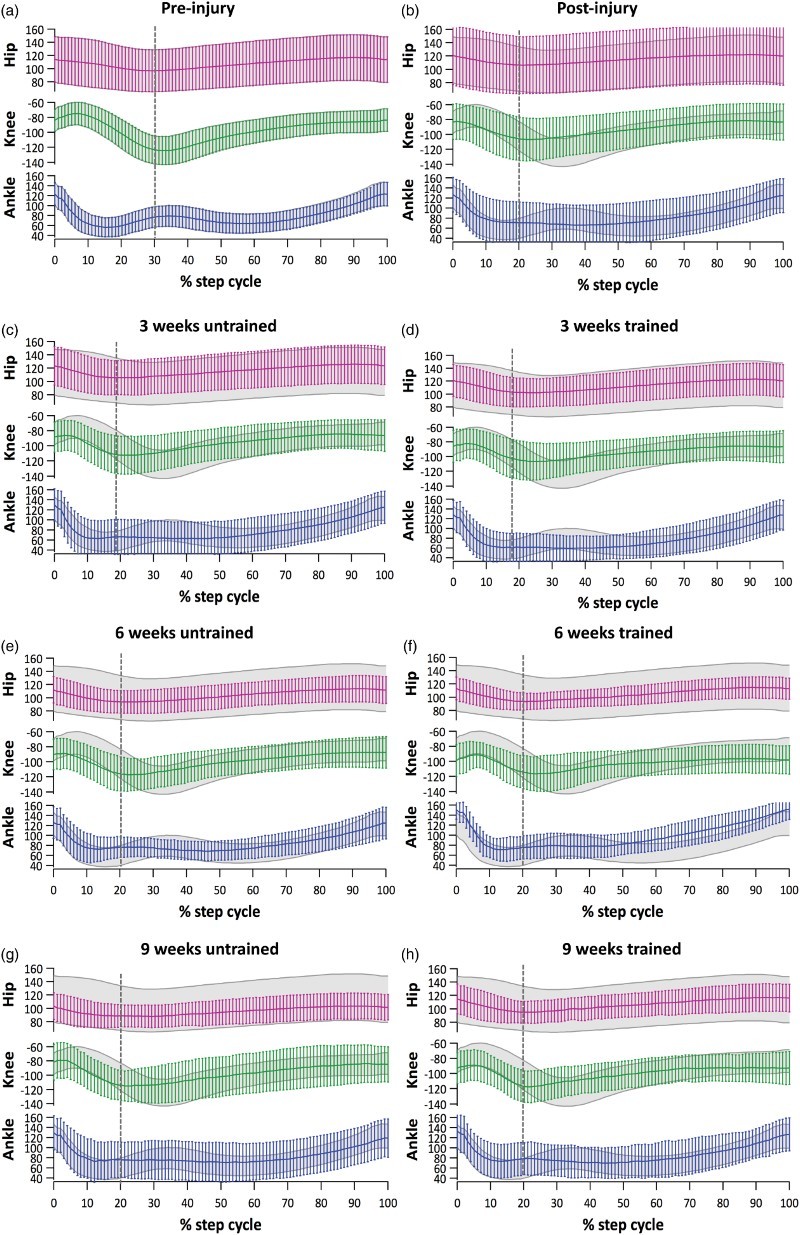Figure 2.

Kinematic analysis of gait cycle. (A) Average joint excursion during a complete normal step cycle of the left hindlimb (grey shadow) was used to compare data from untrained and 3, 6 and 9 weeks trained mice. A full step cycle was defined from toe off (beginning of swing phase) to the next toe off. The vertical dashed grey line indicates the end of swing phase (knee angle was used as a guide). (B) One week after SCI, animals dragged their hindlimb and had small joint excursions. The larger error bars observed at this time point may reflect hindlimb spasticity or step adaptations such as hopping. (C) At 4-weeks, untrained mice were not able to maintain their knee flexed during the swing phase. (D) At 4-weeks, the hip joint excursion of trained animals was similar to pre-injury whereas motion of knee and ankle joints remained limited. Results are expressed as mean (horizontal line) ± SD (vertical lines). Seven weeks after SCI, untrained (E) and trained (F) mice had joint angles that approached pre-injury values. However, untrained animals had smaller ankle angles compare to trained animals during toe off and swing. At 10-weeks, untrained (G) and trained (H) animals had gait a pattern that was similar to the pattern at the 7-weeks time point and that remained different to that of pre-injury. Results are expressed as mean (horizontal line) and ± SD (vertical lines).
